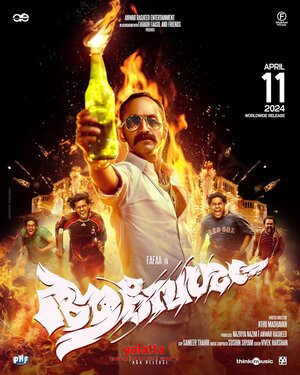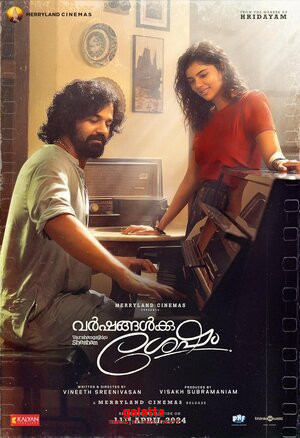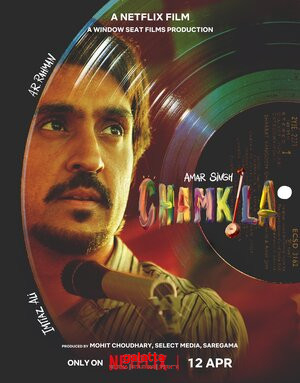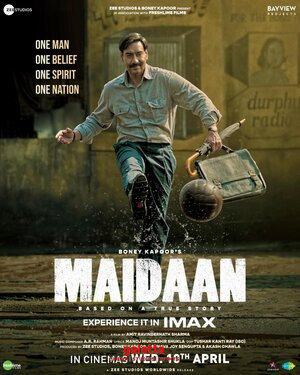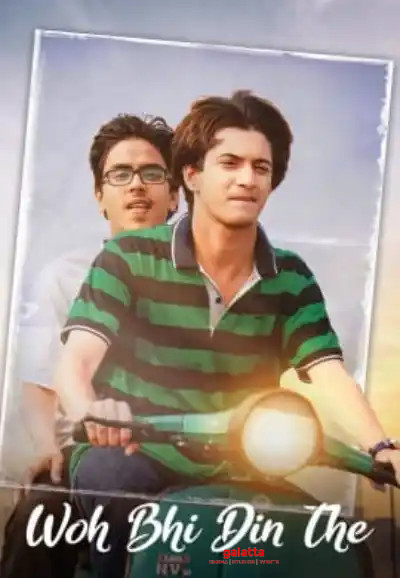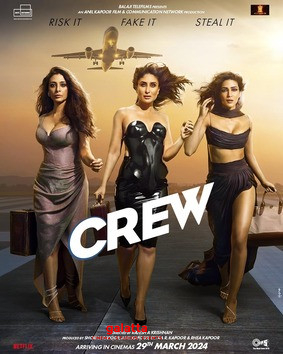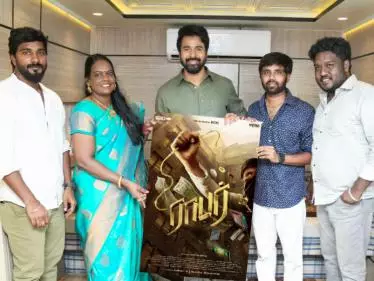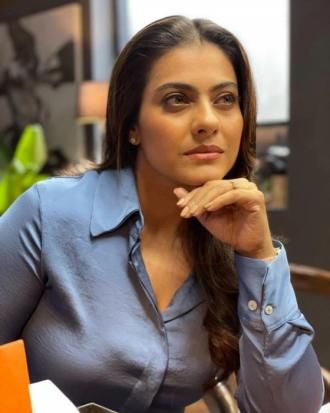Heeramandi Movie Cast & Crew
What would you call a willful woman who insists that her daughter follow the family tradition of becoming a tawaif, a courtesan, despite the daughter’s reluctance? And what would you call this same woman, if she is willing to undergo the ultimate humiliation to save this very daughter from a very difficult situation? Let’s just call her what Heeramandi calls her: Mallika-jaan. The title of this series may refer to the Diamond Bazaar in pre-Independence Lahore, but you could say that it applies to Mallika-jaan, too. Her glittering surface hides a heart that’s as hard as rock. I don’t mean this in a bad way. If you transformed Mallika-jaan into a power suit-wearing corporate head from today’s world, her schemings and wily dealings would be seen as “strategies” to overthrow the competition and keep her company at the top. In fact, you can see Mallika-jaan being best friends with Tara from Made in Heaven. In a dog-eat-dog world, you have to be willing to be labelled a bitch, if you’ll pardon the usage.
Mallika-jaan is a magnificent creation, and Manisha Koirala plays her magnificently. The common complaint about the movies is that they don’t write good parts for women of a certain age, but streaming platforms may be the solution. In many ways, Heeramandi can be seen as a spiritual sequel to Gangubai Kathiawadi. For one, both stories are about “women of ill-repute”, sex workers in the earlier film and courtesans in this gorgeously produced series. And two, both stories are set in contained, hermetically sealed worlds that are so characteristic of Sanjay Leela Bhansali: Kamathipura there, and Heeramandi here. And as he did with Gangubai, Bhansali treats Mallika-jaan like a “hero” in a rip-roaring masala movie. Both women get a whistle-worthy introduction shot. Watch Manisha Koirala rip gently into a foreigner while the mehndi is still wet on her hands and feet, and you see a genteel version of a “mass” scene.
Only Bhansali seems capable of (or interested in) making women-centric masala movies, and several scenes in Heeramandi are what you’d call total paisa-vasool. There’s the wickedly entertaining enmity between Mallika-jaan and Fareedan, played by Sonakshi Sinha. The latter’s entry into the film is a masterclass in how to write a “villain-introduction scene” (not that Mallika-jaan is any less a “villain”, given the things that she does). It’s an all-black scene. Someone has died, and a funeral procession is in progress. And as the procession recedes from Mallika-jaan, who’s at the doorway, we see Fareedan walking towards her. In the midst of death, we witness the birth of a rivalry – and this rivalry fuels the first few episodes that makes you want the entire eight-episode series to be about the games of one-upmanship between these two power-hungry women.
In comparison, the men in Heeramandi come off like a laughable afterthought. Played by the likes of Fardeen Khan, Shekhar Suman and Adhyayan Suman, they are practically like extras, giving shape to archetypes like “illegitimate son” and so forth. Even so, the writing (by Bhansali and Vibhu Puri) is so good that these archetypes make their presence felt. Take the Nawab played by Fardeen Khan. He seems besotted with a tawaif, and he seems to demand exclusivity when it comes to her services – but the minute she is decommissioned as a tawaif, when she can no longer be of use to him, he moves on in the blink of an eye. We see that these courtesans wield power only till they remain courtesans. One way to watch Heeramandi is as a tour of a lost world, with its own set of manners and mores. For instance, the patrons know that attending the last mujra of a tawaif is a matter of highest priority, almost like a sacred ritual.
There are a couple of British villains who do well, but the strongest male character in Heeramandi is Tajdar, played by Taha Shah at the perfect pitch for this project. Those looking for the fiery intensity of a story set in pre-Independence India are advised to look elsewhere. Despite the band of revolutionaries and their cries of ‘Inquilaab Zindabad”, this series is about as gory as a ghazal. There’s a lovely mellowness – a tehzeeb – all around, and this extends to the score, which is never allowed to overpower the proceedings. The overall air is that of sadness. The title music of a Bhansali production is the key to its tonality, and here, we hear dramatic strings that suggest excitement but their sound is swallowed up by a mournful sarangi. This is the story of the end of an era, and one of the most touching visuals is that of the musical instruments that accompany a mujra being draped in white cloth, as though they are dead and are being covered in shrouds.
The foreign-returned Tajdar takes us into the second narrative thread of Heeramandi, an old-world romance that reminds us of Muslim socials like Mere Mehboob. He falls for a woman from Heeramandi without knowing that she’s from there, and he slowly changes his mind about the place, just as his foreign clothes give way to khadi. So within the walls of the opulent mansions in Heeramandi, we get the Fareedan and Mallika-jaan rivalry, and outside, we get the freedom struggle. And slowly, these two narrative threads become braided, as the women of Heeramandi realise – due to various reasons – that they can no longer afford to be mujrewali-s but also have to think like a mulk-wali. The rhymed meter of the words is a treat. One of my favourite lines is uttered by Fareedan, who encourages a lovestruck young woman to follow her heart: “Ishq ne raasta dikhaya hai. Yaar ka naam leke aage badh jaaiye”.
Some portions appear rushed. Given how big a part Fareedan plays in this story, the details about her past are frustratingly vague. There’s a scene where she tears up a sheet of paper into pieces. Someone asks, “Kitne tukde karenge iski?” She replies, “Jitne hamare hue!” I wished this tragic aspect of Fareedan had been explored some more. The love track with Tajdar starts well enough, but after a while, it begins to drag things down. But even in this track, there’s always something – say, the beautiful image of Tajdar’s lover on a swing. It begins to rain and the people around her scurry for shelter, but she’s from Heeramandi and this is the first time we see her in a wide-open space with greenery. She wants this: the rain, the air outside the claustrophobic mansions. She was in a prison. This is her escape, and she is determined to enjoy it. You know that dark clouds lie ahead, but for now, this image is enough.
Of the large cast, the performances are mixed. A film of this nature requires faces and actors that understand and can project the non-natural nature of the staging and the lines as though it's the most natural thing in the world. Manisha, of course, does this brilliantly, and Richa Chadha (in a small role) and Aditi Rao Hydari come a close second. Aditi plays a courtesan whose heart beats for the nation, and she never lets us fully read the character – there are always secrets in those wide-open eyes. Sanjeeda Shaikh registers strongly as a woman who is perennially betrayed, and Indresh Malik is a delight as the trans-person who is filled with gossip as well as a golden heart. It’s lovely to see Farida Jalal in a most loveable part. But Sonakshi Sinha and Sharmin Segal Mehta never rise above being competent. They look too modern, and their line readings don’t have that inner fire. These performances remain on the surface – though it must be said that Sonakshi sets the small screen on fire in ‘Tilasmi baahein’.
The songs by Bhansali are gorgeous, and every number carries a different mood. Only ‘Sakal ban’, at the very beginning, can be called a grand set piece, a celebration of spring and of these women of Heeramandi. The other songs are extensions of the characters. There’s a mujra that plays out when the dancer has been separated from her lover. There’s a mujra that plays out when a dancer is used as a pawn and informed that she will never dance again. There’s a mujra that plays out – in classic Pakeezah and Ram Teri Ganga Maili fashion – as the dancer is asked to perform at the wedding of the man she loves. There’s a mujra that plays out as a portrait of the dancer’s desperation to get a British patron. In this sequence, Bhansali uses ‘Najariya ke maare’, the beautiful thumri that plays in the background during a scene in Pakeezah, and brings it up front and centre, even changing its tune from the one Naushad gave in the older movie. And surely, this must be the only mujra-type performance set against the Art Deco backdrop of a hotel. The way Bhansali respects the past even while finding ways to make it his own, in the present, is truly something else.
There’s so much happening in Heeramandi. The series (conceptualised by Moin Beg) opens with a baby being separated from its mother, goes on to discussions about property, takes a detour to an action sequence about a raid on a British cantonment to steal ammunition… There’s a sacrifice for a lover, there are sacrifices for the motherland, there’s a secret file with details of a murder… There’s a servant who’s resented because she sings better than some of the courtesans, and you keep waiting to see what will happen to her… There’s a man who resorts to gambling for the sake of love… There’s love, hate, and everything in between… What’s not there is self-pity. There’s no wailing about one’s fate as a tawaif. There’s the occasional rant, yes, but otherwise it’s just calm acceptance of a life that has been chosen for them, and now there’s the life ahead that they get to choose for themselves.
There’s a ton of cinematographers, costume designers, additional directors, art designers and set decorators – all of them need a mention. But the vision, of course, is Bhansali’s – and it’s interesting to see him adapt to the format of the mini-series (though the end, I think, hints that there may be more to come). His films are compressed affairs, and therefore more intense – the moments hit you like the whiplash on the soundtrack of Devdas. But with eight episodes, there’s a lot of time to breathe. And there’s also a lot of time to devote to secondary characters like Mallika-jaan’s servants, beautifully played by Jayati Bhatia and Nivedita Bharagava. They understand that Heeramandi is a hellhole, but they wouldn’t like to be anywhere else. It’s a strange kind of loyalty, one that won’t bite the hand that feeds but will certainly complain about it. These shades are impossible to detail at this level in a movie. Big-screen Bhansali is a force of nature, but as Heeramandi proves, there’s always another way to display your distinctive style.


